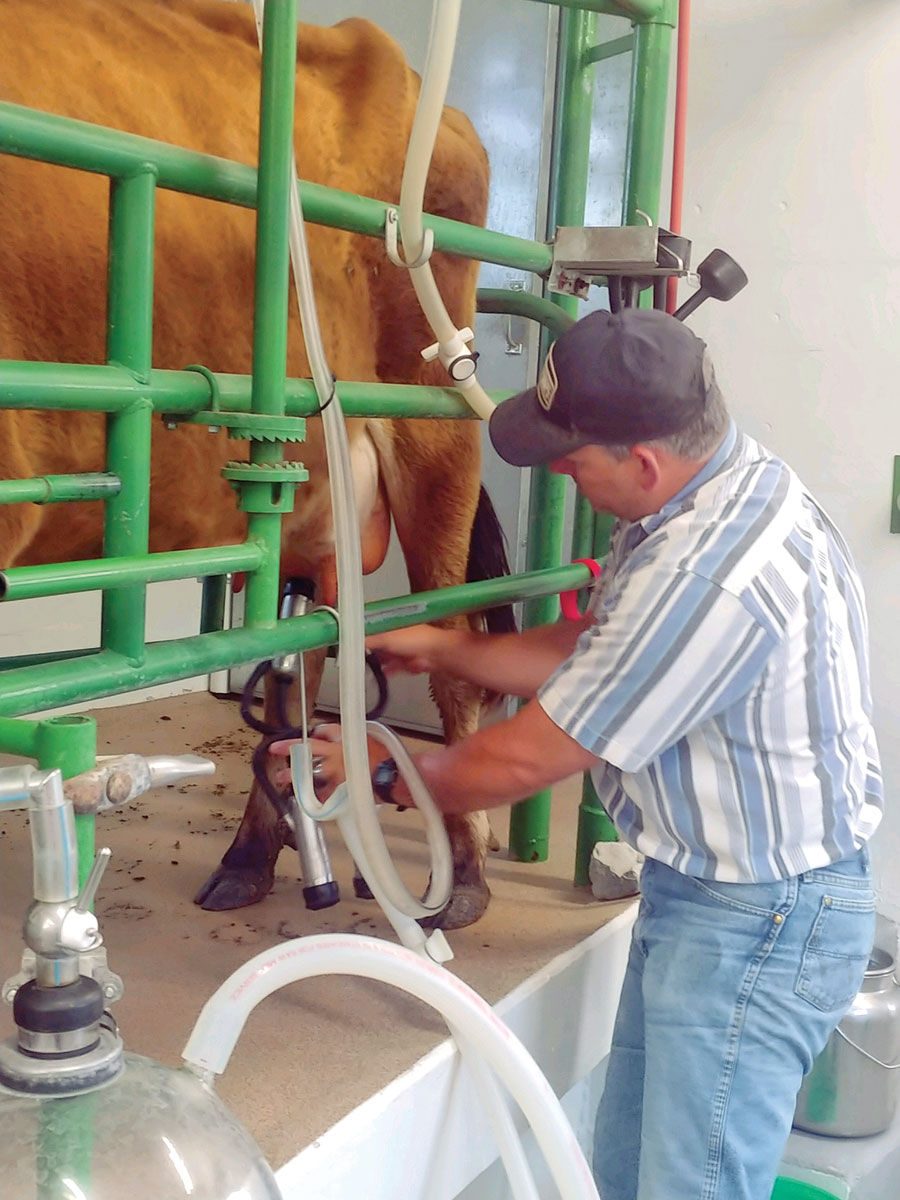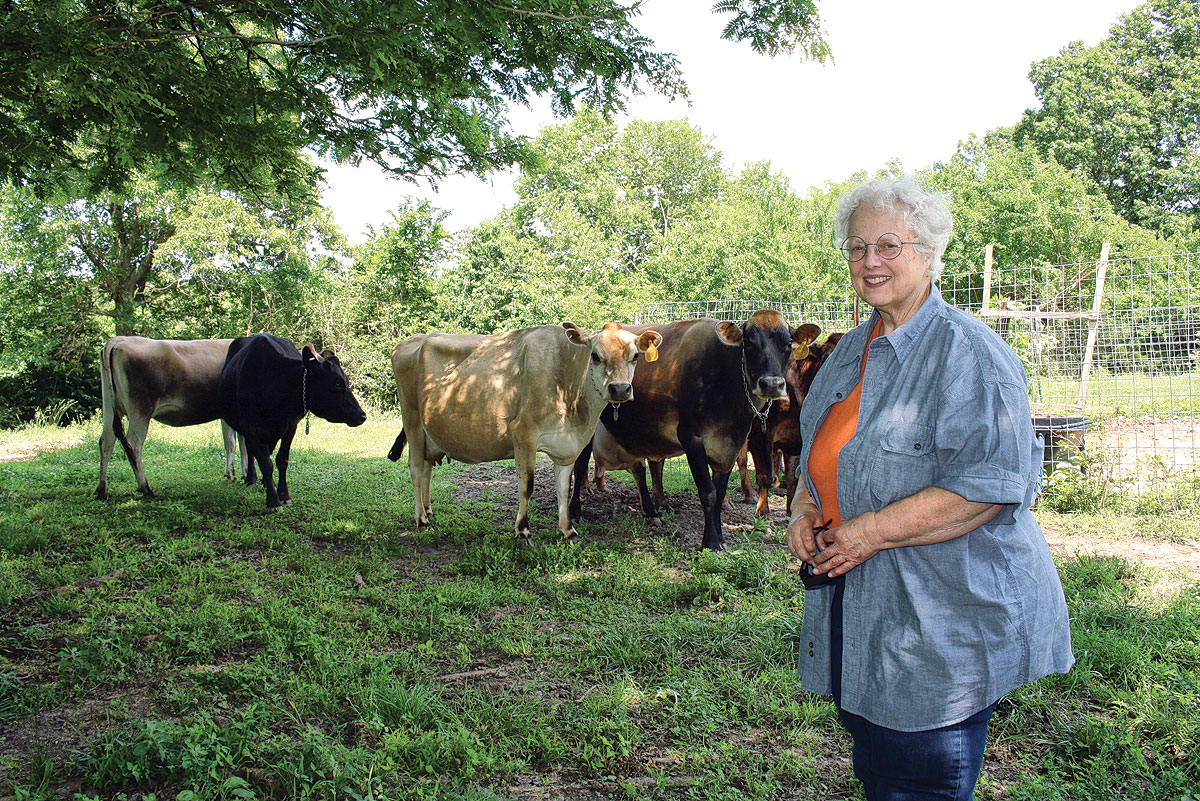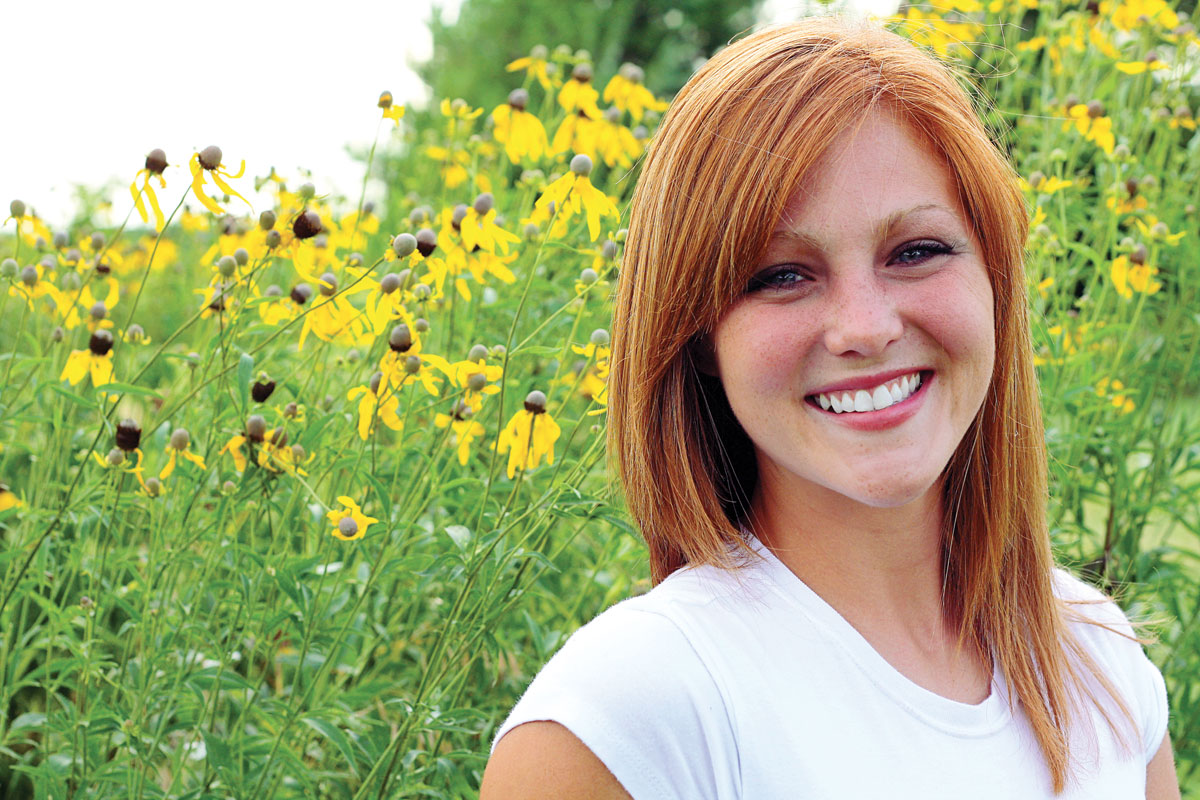 Families partner to build a raw milk dairy with plans to expand their herd and product line
Families partner to build a raw milk dairy with plans to expand their herd and product line
At the tender age of 3, Sarah Kuhlman knew what she wanted to be when she grew up. She wanted to be a dairy farmer.
Sarah’s family didn’t live on a farm, but her mother hailed from a South Texas farm and made sure Sarah knew how things grew, about cattle and the soil. Her family purchased beef, eggs and pork from local farmers, and bought raw milk from a neighbor in Norman, Okla.
“It was a little Jersey dairy about a mile from the house,” Sarah recalled. “They had a milking parlor with a glass front and they would milk three cows at a time.”
Thanks to a chance meeting with an area farrier, Sarah’s dairy farming dreams began to come true.
Sarah met Shane English when she was looking for a horse for her daughter.
“He taught my kids how to ride,” she recalled. “He and I then got into a few little things. We liked farm-raised eggs, so we got chickens and things like that. He was buying bottle calves and one of the women he was buying from said he needed a nurse cow.”
The lady had a Jersey cow she was willing to part with at a reasonable price, so he purchased the cow to his raise calves. After that first cow, it didn’t take long for a new venture to begin for Shane and Sarah – MooJuice Creamery.
“I told him, ‘I always wanted to be a dairy farmer, so teach me to milk a cow,’” she recalled with a smile. “He taught me how to milk a cow, but then when it came time to dry her off, we bought a second cow. By that time we had customers who were buying milk from us.”
Shane, who milked for several local farmers while in high school, converted part of his horse barn into a small milking facility, and the dairy herd began to grow.
“Once you have two cows, it’s all downhill from there,” Sarah said. Six years later, they now have 34 Jersey and Jersey-cross cows and heifers.
Sarah and Shane decided the dairy operation would have to start paying for itself once Sarah retired, so Sarah and her husband John began taking dairy courses, attending seminars, learning all they could about the dairy industry and raw milk production.
John and Sarah found a 92-acre farm near Brighton, Mo., and worked with local and state agencies to determine if it was suited for a dairy operation. After the purchase, they utilized programs offered by the Natural Resources Conservation Service to develop a grazing system, fence off wooded areas, install a watering system for the paddocks and the families began construction of a barn to meet their goals.
The spacious barn has a milking parlor, a bottling room and a pasteurizing room, which will allow the partners to produce and sell products such as butter and reduced fat chocolate milk, in addition to other areas. Valentines Day 2018 was the first time cows were milked in the facility.
Like the milking parlor from Sarah’s memory, visitors can watch cows being milked through windows. The creamery has hosted tours of school children to give them a sample of life on the farm.
Shane reclaimed the stanchion system from another farm, making it look as if it were new.
The creamery is in the final stages of obtaining its Grade A license.
“We voluntarily take our milk into the local health department for testing, just like what we would do when we are licensed,” Sarah explained. “We have a few more steps to meet the facility standards for our Grade A. The pasteurized products are a whole other group of steps and licensing. Because we want to keep our raw milk at the price it is, we are going to have to do other products to make it profitable.”
MooJuice Creamery focuses on healthy, comfortable cows that produce good tasting milk.
“We look at the taste of the milk and quality of the cream; we aren’t looking for a high quantity,” Sarah said.
Calves are left on the cow until weaning and cows are milked once a day. By allowing the calves to remain with the cows, Sarah said they believe they have healthier, happier cows and calves.
“We seem to have better udder health and less mastitis; plus, our calves grow well while still on the cow,” Sarah relayed. “We’re still producing more than what we need for our customers, and we bottle only what we have orders for so we’re not incurring the cost of bottling milk no one is drinking. The excess milk is fed to the animals on the farm.”
Between 15 and 17 cows are milked daily, however that number can vary depending on the calving schedule.
“We’re hoping to grow our herd as we get into the pasteurization,” Sarah said, adding that they have retained all of their heifers.
Sarah and Shane considered increasing the cowherd to sell milk through a local cooperative, but it wasn’t feasible for the coop.
“I’m glad we didn’t because we have some flexibility in what we do in terms of how we breed our cows, the fact that we can leave calves on them and we don’t have to buy our milk back from the coop.”
Cattle graze throughout the day and are offered a custom ration developed by Shane in the milking parlor to not only provide a balanced diet for the cows, but to improve the taste of the milk.
“It doesn’t have anything in it that gives the milk a flavor we don’t like, and there’s nothing in there to push production,” Sarah explained.
The majority of the hay fed to the herd is a native grass mix, which is produced on the farm or purchased.
MooJuice follows a vaccination and deworming protocol established by their veterinarian. Providing vaccination and proper health care are part of keeping an animal healthy and productive.
“We want an environment where we’re comfortable working in, in terms of how the animals are treated. We want to make it as stress-free as possible and have a good relationship with our cows… I don’t like stressed animals and we’re responsible for the animals on the property; I wouldn’t feel good about myself if we weren’t treating them in a humane way.”
When asked what Sarah thought her 3-year-old self would think about MooJuice Creamery, the answer was simple.
“I think she’d be in hog heaven. No, she’d be in cow heaven,” Sarah said with a smile. “It’s been such a good experience. You only live once, and I had never been a dairy farmer. We want to be able to provide a living from the farm for the two families, and I think that’s obtainable.”








I’ve bought there before, then found out it was pasteurized. I generally prefer my milk Raw.
MooJuice Creamery milk is not pasteurized.